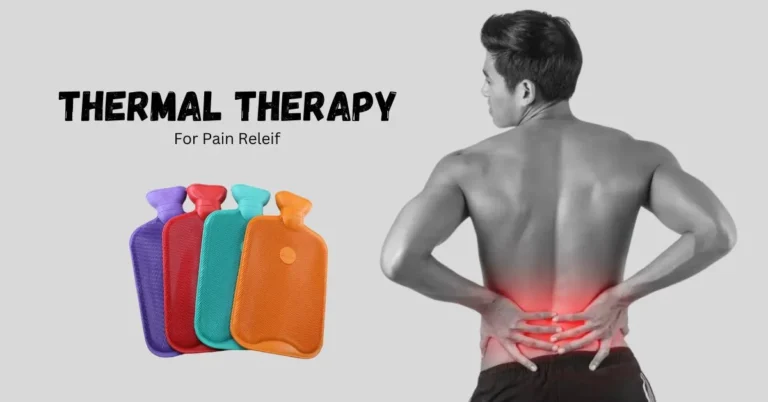Understanding TMS Treatment APN: Your Beacon of Hope for OCD Treatment Relief
Are you seeking a breakthrough in conquering Obsessive-Compulsive Disorder (OCD)? Explore the innovative realm of TMS treatment at Plus by APN. Have you ever wondered how this advance therapy could transform your life? Let’s dive deep into our comprehensive guide on TMS treatment APN to uncover its effectiveness, safety, and potential to alleviate the burdens of OCD. Join us on a journey of discovery and empowerment as we navigate through the transformative landscape of TMS therapy, offering insights to guide you towards relief and liberation from OCD’s grip.
Readers are always curious about the science behind Transcranial Magnetic Stimulation treatment APN and also eager to learn how this non-invasive procedure could offer hope for OCD sufferers? Embark on a quest for understanding as we unravel the complexities of OCD and the urgent need for effective treatment solutions. From understanding the causes of OCD to navigating the intricacies of advanced therapies like TMS, our informative guide is designed to empower you with knowledge and inspire hope for a brighter tomorrow.
What is Transcranial Magnetic Stimulation?
Transcranial Magnetic Stimulation (TMS) is a non-invasive procedure that uses magnetic fields to stimulate nerve cells in the brain. It involves placing an electromagnetic coil against the scalp near the forehead, and the magnetic pulses produced by the coil pass easily through the skull and stimulate brain cells. TMS is primarily used to treat depression, but it is also being studied for its potential to treat other neurological and psychiatric conditions such as anxiety disorders, OCD, and PTSD.
What is Deep Transcranial Magnetic Stimulation?
Deep Transcranial Magnetic Stimulation (dTMS) is an advanced form of Transcranial Magnetic Stimulation (TMS) that targets deeper regions of the brain compared to traditional TMS. It utilizes a specialized coil design, known as the H-coil, which allows for deeper penetration of magnetic fields into the brain tissue. This deeper penetration enables dTMS to reach and stimulate brain areas that are implicated in various neurological and psychiatric disorders, such as depression, obsessive-compulsive disorder (OCD), and addiction. By targeting these deeper brain regions, dTMS aims to modulate neural activity and restore normal brain function, thereby alleviating symptoms associated with these conditions.
Understanding Obsessive-Compulsive Disorder (OCD)
Obsessive-Compulsive Disorder (OCD) affects about 1.2% of the population, causing distressing thoughts and compulsive behaviors. These symptoms can disrupt daily life, leading to feelings of isolation and distress. Understanding the pervasive nature of OCD is essential in appreciating the urgency for effective treatment options that address its multifaceted impact on individuals’ well-being.
What Causes OCD?
OCD’s origins are multifaceted, with biological changes, genetics, learned behaviors, and stressful life events all playing a role. Childhood trauma or significant life events can trigger coping mechanisms, while serotonin imbalances and genetic predispositions also contribute to OCD. By unraveling the complex interplay of these factors, we gain insight into the diverse pathways through which OCD manifests, underscoring the need for personalized and targeted treatment approaches.
Unveiling Advanced Therapies: rTMS vs. dTMS
Before delving into dTMS, it’s crucial to grasp the differences between repetitive Transcranial Magnetic Stimulation (rTMS) and dTMS. While rTMS targets surface brain layers, dTMS penetrates deeper, offering a more targeted approach for conditions like OCD. This distinction highlights the evolution of therapeutic modalities and the potential for deeper insights into neurological disorders that necessitate precision and efficacy in treatment interventions.
Introducing Deep TMS Treatment for OCD
Deep Transcranial Magnetic Stimulation (deep TMS) is a cutting-edge therapy that uses magnetic fields to stimulate deeper brain regions associated with OCD. Approved by the FDA in 2018, deep TMS has shown remarkable efficacy in alleviating OCD symptoms. By harnessing technological advancements, deep TMS offers a non-invasive and promising avenue for individuals seeking relief from the burdens of OCD.
The Science Behind Deep TMS
Deep TMS builds upon rTMS technology, modulating neural activity to alleviate OCD symptoms. Its unique H-coil design allows for deeper brain penetration, optimizing treatment precision and effectiveness. Through a nuanced understanding of the underlying neural mechanisms, deep TMS represents a paradigm shift in OCD treatment, offering new possibilities for targeted and sustainable symptom alleviation.
How Does Deep TMS Differ?
The innovative design of deep TMS distinguishes it from traditional methods, offering enhanced brain penetration and broader activation. This precision targeting of specific brain regions sets deep TMS apart as a pioneering therapeutic modality for OCD. By leveraging advanced technology and scientific insights, deep TMS opens new horizons in mental health care, providing hope and relief for individuals navigating the challenges of OCD.
Navigating the Deep TMS Treatment Journey
Deep TMS therapy typically involves daily sessions over a six to eight-week period. Each session, lasting 18-20 minutes, is personalized to confront individual OCD triggers, fostering meaningful progress and symptom alleviation. By integrating personalized protocols and therapeutic strategies, deep TMS offers a comprehensive approach to OCD management, empowering individuals to reclaim agency over their mental health journey.
Is Deep TMS Effective for OCD?
Clinical trials have consistently demonstrated deep TMS’s efficacy for OCD treatment, with response rates as high as 72.6% in real-world settings. Beyond symptom relief, deep TMS also enhances the overall quality of life for patients. By addressing the underlying neurological mechanisms driving OCD, deep TMS offers a transformative pathway to recovery, empowering individuals to lead fulfilling and meaningful lives.
Finding Healing with Plus by APN Deep TMS Treatment
At Plus by APN, we’re dedicated to providing holistic mental health treatment through FDA-approved deep TMS therapy. Our personalized approach, combined with multiple treatment locations and telehealth options, ensures accessibility and continuous support for individuals seeking relief from OCD. By prioritizing patient-centered care and innovative therapeutic modalities, we strive to unlock the full potential of deep TMS in transforming lives and fostering lasting recovery.
Comparing dTMS with Other OCD Treatments
Obsessive-Compulsive Disorder (OCD) presents a complex treatment challenge, often requiring a multi-faceted approach. While traditional treatments such as medication and therapy have been staples in OCD management, the emergence of deep Transcranial Magnetic Stimulation (dTMS) offers a promising alternative.
Medication:
Medication, typically selective serotonin reuptake inhibitors (SSRIs) or serotonin-norepinephrine reuptake inhibitors (SNRIs), are commonly prescribed for OCD. While effective for some, medications may not provide sufficient relief for everyone. Additionally, side effects and the potential need for long-term use can be drawbacks.
Therapy:
Cognitive-behavioral therapy (CBT), particularly exposure and response prevention (ERP), is considered the gold standard for OCD therapy. CBT helps individuals confront and manage obsessive thoughts and compulsive behaviors. However, therapy may be time-intensive and require significant commitment.
dTMS:
In contrast, dTMS offers a non-invasive, medication-free approach to OCD treatment. By directly stimulating deeper brain regions associated with OCD, dTMS addresses neural circuitry implicated in the disorder. Unlike medication, dTMS does not pose the risk of systemic side effects, offering a favorable safety profile. Additionally, dTMS may complement therapy by targeting underlying neurological mechanisms while patients concurrently engage in therapeutic interventions.
Addressing Treatment Resistance
For individuals with treatment-resistant OCD, where conventional therapies have yielded limited results, dTMS represents a beacon of hope. Treatment resistance may stem from various factors, including biological differences in brain functioning, genetic predispositions, and the chronic nature of OCD symptoms. dTMS offers a novel therapeutic avenue by directly modulating brain activity in regions implicated in OCD pathology. By bypassing potential barriers to treatment response, such as medication intolerance or limited therapy efficacy, dTMS provides an alternative for individuals facing treatment resistance.
Patient Selection Criteria
While dTMS holds promise for many individuals with OCD, patient selection criteria are essential for optimizing treatment outcomes. Candidates for dTMS therapy typically undergo comprehensive evaluations to assess suitability. Key considerations may include:
- Diagnosis of OCD confirmed by a qualified mental health professional.
- Documentation of treatment resistance, such as inadequate response to medication or therapy.
- Absence of contraindications, such as metallic implants or history of seizures.
- Patient willingness and ability to commit to the treatment protocol, including regular session attendance.
By adhering to established selection criteria, clinicians ensure that dTMS therapy is tailored to those most likely to benefit, maximizing treatment efficacy.
Managing Expectations
Managing patient expectations is paramount in fostering realistic treatment goals and outcomes. While dTMS has demonstrated significant efficacy in alleviating OCD symptoms, individual responses may vary. Patients should understand that dTMS is not a “quick fix” but rather a gradual process that may require several weeks to achieve noticeable improvements. Additionally, while many individuals experience symptom reduction during treatment, maintenance therapy or adjunctive interventions may be necessary to sustain progress over time. Open communication between patients and clinicians is crucial in establishing realistic expectations and addressing any concerns or misconceptions throughout the treatment journey.
Combining dTMS with Other Therapies
The integration of dTMS into a comprehensive treatment plan can enhance therapeutic outcomes for individuals with OCD. Collaborative approaches that combine dTMS with traditional therapies, such as medication and CBT, leverage the synergistic benefits of each modality. For example:
- Medication Augmentation: For patients partially responsive to medication, dTMS may serve as an adjunctive therapy to enhance treatment effects or mitigate medication side effects.
- Therapeutic Synergy: By targeting distinct but complementary aspects of OCD pathology, dTMS, and therapy work synergistically to address both the neurobiological and cognitive-behavioral components of the disorder.
- Long-Term Maintenance: Following the completion of dTMS therapy, ongoing therapy sessions or medication management may be recommended to maintain treatment gains and prevent symptom relapse.
The collaborative efforts of interdisciplinary treatment teams ensure that patients receive comprehensive care tailored to their unique needs and preferences.
Long-Term Benefits and Maintenance
While dTMS therapy can yield significant symptom relief during the treatment period, its long-term benefits extend beyond the cessation of sessions. Studies have demonstrated sustained improvements in OCD symptoms and overall quality of life following dTMS therapy, with many patients experiencing lasting remission or reduced symptom severity. To optimize long-term outcomes, patients may benefit from:
- Regular follow-up appointments to monitor symptom progression and treatment response.
- Implementation of relapse prevention strategies, including lifestyle modifications and ongoing therapeutic support.
- Flexibility in treatment approaches, such as booster sessions or adjunctive therapies, to address evolving needs over time.
By prioritizing long-term maintenance and support, clinicians empower patients to sustain treatment gains and thrive beyond the confines of OCD.
Potential Applications Beyond OCD
While dTMS is FDA-approved for OCD treatment, its therapeutic potential extends to a diverse range of mental health conditions and neurological disorders. Emerging research suggests promising applications of dTMS in:
- Bipolar Disorder: By modulating mood-regulating brain regions, dTMS shows promise in stabilizing mood fluctuations and reducing depressive symptoms in individuals with bipolar disorder.
- Post-Traumatic Stress Disorder (PTSD): Targeted stimulation of brain regions involved in fear processing may alleviate PTSD symptoms, including intrusive memories and hyperarousal.
- Schizophrenia: dTMS holds potential as an adjunctive therapy for individuals with schizophrenia, complementing existing pharmacological and psychosocial interventions to improve cognitive function and symptom management.
- Alzheimer’s Disease: Preliminary studies suggest that dTMS may mitigate cognitive decline and enhance cognitive function in individuals with Alzheimer’s disease by promoting neural plasticity and synaptic connectivity.
While further research is needed to elucidate the full scope of dTMS applications, early findings underscore its versatility as a therapeutic modality across diverse clinical contexts.
Safety and Regulatory Standards
Safety is paramount in the delivery of dTMS therapy, with adherence to stringent regulatory standards and safety protocols ensuring patient well-being throughout treatment. Prior to initiating dTMS therapy, clinicians conduct thorough assessments to identify and mitigate potential risks, including:
- Screening for contraindications, such as metallic implants, cardiac pacemakers, or seizure disorders, which may preclude dTMS treatment.
- Monitoring for adverse effects during and after dTMS sessions, such as headaches, scalp discomfort, or transient mood changes, to promptly address any concerns.
- Ensuring compliance with regulatory guidelines, including FDA requirements for device certification, operator training, and treatment facility accreditation.
By prioritizing safety and adherence to regulatory standards, clinicians uphold the highest standards of care and promote optimal treatment outcomes for individuals undergoing dTMS therapy.
Cost Considerations and Financial Assistance
While dTMS therapy offers a promising avenue for OCD treatment, cost considerations may influence treatment accessibility for some individuals. Factors influencing the cost of dTMS therapy include session fees, equipment maintenance, and clinician expertise. While some insurance plans may provide coverage for dTMS treatment, coverage eligibility varies widely and may be subject to pre-authorization requirements or coverage limitations. Additionally, financial assistance programs or sliding-scale fee structures may be available to mitigate out-of-pocket expenses for eligible patients. Clinics offering dTMS therapy often provide financial counseling and assistance to help patients navigate insurance coverage and explore alternative payment options. By addressing cost considerations and providing support resources, clinicians ensure equitable access to dTMS therapy for individuals seeking relief from OCD symptoms.
Patient Empowerment and Advocacy
Empowering patients to advocate for their mental health needs and access dTMS therapy is essential in fostering positive treatment outcomes and patient-centered care. Key strategies for patient empowerment and advocacy include:
- Education and Information: Providing comprehensive information about dTMS therapy, including the treatment process, expected outcomes, and potential risks, enables patients to make informed decisions about their care.
- Supportive Communication: Establishing open and transparent communication channels between patients and clinicians fosters trust, collaboration, and shared decision-making throughout the treatment journey.
- Community Engagement: Connecting patients with peer support networks, online forums, or advocacy organizations dedicated to mental health awareness and access to innovative treatments encourages solidarity and mutual support among individuals with OCD.
- Accessible Resources: Ensuring accessibility to treatment facilities, telehealth options, and financial assistance programs expands treatment opportunities for patients facing barriers to care.
By championing patient empowerment and advocacy, clinicians empower individuals to assert their rights to quality mental health care and pursue pathways to recovery with confidence and dignity.
Final Thoughts
To sum up, the journey through the realm of TMS treatment (APN) and deep-TMS has shed light on a promising path towards relief from Obsessive-Compulsive Disorder (OCD). By unraveling the complexities of OCD and exploring the transformative potential of TMS therapy, we’ve gained valuable insights into its efficacy, safety, and long-term benefits. From understanding the science behind TMS to navigating its integration into comprehensive treatment plans, this journey has empowered us to envision a future where individuals can reclaim agency over their mental health journey. As we continue to champion patient empowerment and advocacy, let us embark on this journey together, with hope, resilience, and a commitment to fostering lasting recovery and well-being.
FAQs:
How long does it take to see results from TMS treatment at APN?
Patients typically start noticing improvements in their symptoms after a few weeks of TMS treatment, with a full course spanning over six to eight weeks of daily sessions lasting 18-20 minutes each.
Is TMS treatment at APN suitable for everyone with OCD?
While TMS treatment at APN can be highly effective for many individuals with OCD, eligibility depends on factors like symptom severity, medical history, and response to traditional therapies, necessitating a comprehensive evaluation by a qualified mental health professional.
Does TMS Help with OCD?
TMS has shown high effectiveness in treating OCD, with significant improvement observed in over one-third of individuals who haven’t responded to traditional treatments.
Is TMS Therapy FDA-Approved for OCD?
Yes, deep TMS therapy is FDA-approved for OCD treatment, marking a significant milestone in OCD treatment options.
Is TMS for OCD Covered by Insurance?
Insurance coverage for TMS varies, so it’s essential to consult with your provider or treatment provider for current coverage options.







